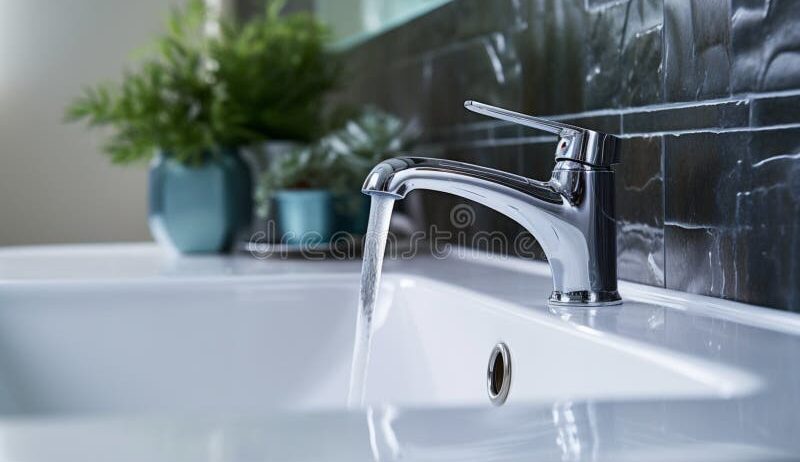In an era marked by escalating environmental challenges, the quest for innovative solutions to conserve resources is ever more urgent. One of the critical areas of focus is water conservation. As the global population burgeons, the demand for clean drinking water rises, and with it comes a pressing need to utilize our resources more judiciously. A technology that has emerged as a frontrunner in this domain is the touchless faucet. By integrating modern advancements in design and functionality, touchless faucets promise to revolutionize our water usage and energy consumption.
The primary mechanism behind touchless faucets is the sophisticated sensor technology embedded within them. These sensors detect the presence of hands, activating the water flow automatically and halting it once hands are removed. This seemingly simple functionality harbors significant implications for sustainable living. By eliminating the need to manually turn on the faucet, touchless faucets substantially reduce water wastage, especially in high-traffic areas such as public restrooms and kitchens.
First and foremost, the energy-saving facet of touchless faucets can be attributed to their ability to minimize the duration for which water runs. Traditional faucets often fail to provide a consistent and mindful approach to water usage. Users may leave the tap running unnecessarily while lathering soap or scrubbing dishes, leading to considerable water loss. In contrast, touchless faucets address this issue adeptly. When users can engage the water flow only when needed, the faucet inherently conserves water. The conservation of water implies a corresponding reduction in energy usage associated with water heating. It follows, therefore, that less hot water usage translates to lower energy costs and decreased environmental impact from energy production.
Moreover, touchless faucets foster a culture of awareness and responsibility regarding water usage. As people witness the instantaneous flow of water when needed, they are more likely to reflect on their consumption habits. This shift in consciousness is crucial—changing consumer behavior is often deemed just as important as technological advancements. When individuals understand the connection between their actions and resource conservation, they can adopt more sustainable practices in various areas of their lives. The promise of touchless faucets does not merely lie in their functionality; it beckons an entire shift in perspective concerning how we view water as a precious resource.
It is also essential to note the hygienic benefits that accompany touchless faucets. In a world increasingly concerned with cleanliness, particularly in light of recent global health crises, the ability to operate faucets without touching surfaces reduces the transfer of germs and bacteria. This heightened hygiene further solidifies the case for touchless technology in both residential and commercial settings. Fewer germs mean a healthier population, leading to further resource conservation in healthcare systems.
Another compelling aspect of touchless faucets is their adaptability to various environments. Whether in private homes, restaurants, or public facilities, these faucets seamlessly integrate into existing plumbing systems. They are available in diverse designs and styles, making them both functional and aesthetically pleasing. The installation of touchless faucets not only manifests practical benefits but also enhances the overall style of a space. This adaptability serves as an invitation for more individuals to consider their use, fostering a wider adoption of water-saving technologies. When conservation becomes synonymous with convenience and style, it has the potential to overcome initial resistance to change.
Touchless faucets also contribute to advancements in smart home technology. The integration of touchless technology with IoT (Internet of Things) frameworks allows users to track and manage their water usage digitally. By monitoring consumption patterns, individuals can adjust their habits accordingly, fostering a proactive approach to resource management. This intersection between technology and sustainability unveils new avenues for innovation. It transcends the faucet itself, encouraging a broader adoption of intelligent technologies aimed at conserving energy and water in various facets of daily life.
The implications of touchless faucets extend into economic arenas as well. By conserving water and reducing energy expenditures, touchless faucets amplify financial savings in the long run. Households and businesses alike can experience a noticeable decrease in water bills as well as energy costs associated with heating water. When viewed through the lens of cost-efficiency, touchless faucets present a fiscally responsible choice that aligns perfectly with sustainability goals. This alignment of economic and environmental benefits creates a compelling case for their proliferation.
Nevertheless, it is crucial to recognize the importance of responsible manufacturing practices associated with touchless faucets. To genuinely contribute to sustainability, manufacturers must ensure that their production processes are eco-friendly. From sourcing materials to minimizing waste and energy consumption during production, accountability is paramount. Only through a holistic approach embracing both resource conservation in usage and sustainable manufacturing can touchless faucets fulfill their promise of fostering a greener planet.
In conclusion, touchless faucets represent a paradigm shift in the way we perceive and utilize our water resources. By promulgating efficiency through sensor technology, enhancing hygiene, and integrating with modern smart home systems, they emerge as powerful allies in the fight against climate change. The virtues of water conservation and energy-saving potential woven into their design beckon us to examine our habits and challenge us to reimagine our everyday practices. Adoption of such innovations is not solely a personal decision but a collective movement towards a more sustainable future. As we embrace these technologies, we cultivate a culture of conservation—where resourcefulness and responsibility reign, and the promise of a healthful planet becomes an achievable reality.






